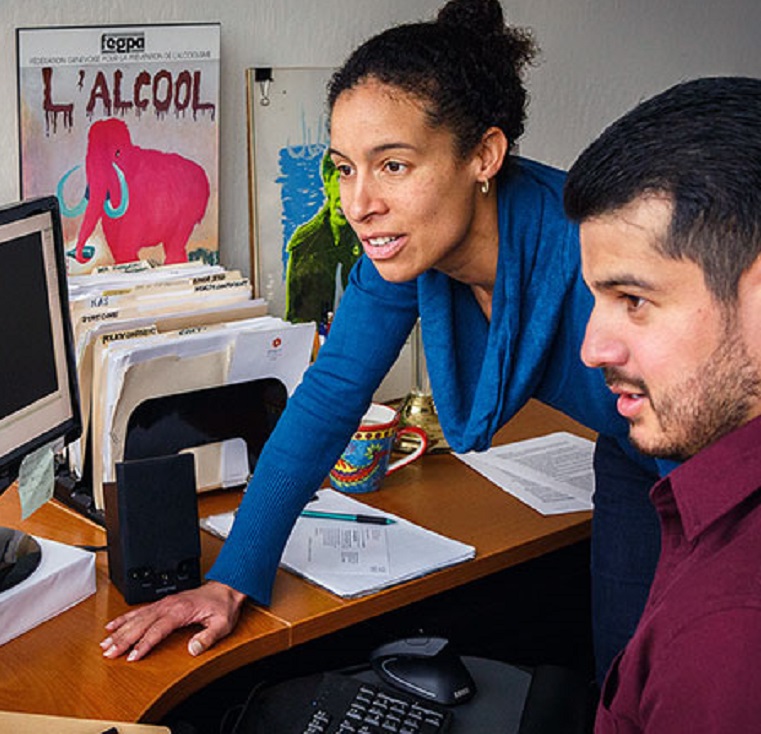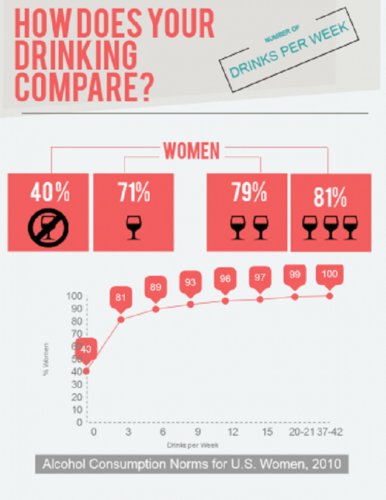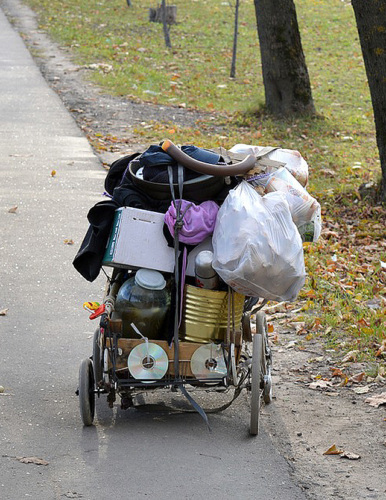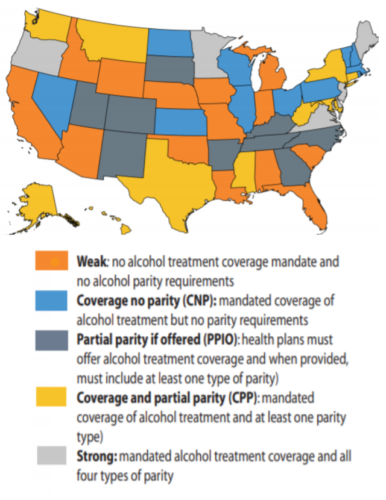
Alcohol Research Group

Established in 1959, ARG conducts and disseminates research on the epidemiology of alcohol and other drug consumption and problems, alcohol health services research, and alcohol policies while also training future generations of researchers. ARG is also home to the National Alcohol Research Center.
-
Focus Areas
Alcohol, Tobacco, Drugs & Mental Health, Chronic Disease Prevention, Data, Technology & Innovation, Global Health, Health Care & Population Health -
Issues
Alcohol, Cancer, Mental Health, Tobacco -
Expertise
Research – Quantitative, Research – Surveillance, Research – Survey -
Strategic Initiatives
Opioids
Our Impact
See all Alcohol Research Group Impacts

- 11K+ recovery homes identified in the U.S. by ARG & partners, part of the first-ever database in the country
- 1K+ published peer-reviewed journal articles by ARG scientists
- 270+ Fellows mentored and supported through ARG training
Projects
Active Projects
- Advancing the Science on Recovery Community Centers to Support Persons Treated with Medications for opioid Use Disorder
-
As part of this body of work, Amy Mericle will serve as a Co-Investigator on the proposed R24 application that aims to engage multiple stakeholders and produce actionable deliverables to advance the science of testing the effectiveness of RCCs in supporting individuals with opioid use disorder who have received or are receiving medication-assisted treatment. In this capacity, she will serve on the project steering committee, which will be responsible for selecting and participating in monthly webinars, reviewing and scoring pilot study proposals, and helping to develop conference symposiums and panel sessions. She will also attend at least one steering committee meeting in-person each project year. PI: Amy Mericle
- High-Intensity Drinking over the Life Course
-
This work will broaden our knowledge of both the precursors to and the outcomes of high-intensity drinking (HID) at various points over the life course, also estimating the public health burden attributable to high alcohol intake. This research project is poised to improve HID measurement, track HID trends over time, and enhance theory by contextualizing intensity within an individual’s overall drinking pattern, drinking history, event-level characteristics, and individual and environmental influences. Co-Directors: Camillia K. Lui and Thomas K. Greenfield
- Center Statistics Core
-
This core project plays a crucial role in the National Alcohol Research Center by intensifying, coordinating and focusing statistical and analytic functions, and by developing new statistical techniques needed for analyses. This project also involves training activities to enhance statistical capacities of scientific staff at all levels. Director: Thomas K. Greenfield
- Center Administration Core
-
The Administrative Core facilitates integration of the National Alcohol Research Center and its synergy and success, training, dissemination and collaboration. It supports and responds to a rich diversity of approaches and compelling public health questions, and stands to inform future research in the disparities arena with conceptual, measurement and analytical innovations. Director: William C. Kerr; Associate Director: Nina Mulia
- National Alcohol Surveys: Advancing Epidemiologic Analyses of 21st Century Drinking
-
The implementation of the 2024 National Alcohol Survey (NAS) will deepen our knowledge of how to collect high quality survey data and biological samples, responding to contemporary survey research challenges. Expanding the NAS series to 45 years will provide us with new data to develop and examine up-to-date trends in alcohol use and problems, and potential disparities in the risk for alcohol-related problems across gender, socioeconomic and racial/ethnic groups. Director: Priscilla Martinez
- Health Disparities in Alcohol Use and Other Risk Behaviors after the Onset of Cancers and Cardiovascular Disease-Related Conditions
-
A large segment of the US population lives with chronic conditions adversely affected by drinking. Given our integrative approach, study findings will uniquely contribute to the knowledge base for multi-faceted interventions that can simultaneously address harmful drinking and other risk behaviors to help improve disease management, treatment adherence and overall health of individuals with alcohol-related health problems. Our results concerning disparities in knowledge and behaviors across demographic subgroups will help identify those at high risk for continued drinking with health conditions and inform contextually-relevant interventions targeted at them. Co-Directors: William C. Kerr and Won Kim Cook
- Quality of Alcohol-Related Care Received: Missed Opportunities, Disparities and Impacts of Health Reform
-
Unhealthy drinking and alcohol use disorder (AUD) together affect more than one of every four American adults and are a leading cause of preventable death, with tremendous economic and social costs. This study seeks to increase understanding of gaps in the quality of alcohol-related care received among unhealthy drinkers and persons with AUD, and how this is changing with health reform. Based on analyses of national survey and specialty treatment data, study results may help to stimulate efforts of clinicians, healthcare administrators, treatment providers, and policymakers to improve access to quality alcohol-related care for all. Director: Nina Mulia
- Enhancing Effectiveness Research on Recovery Housing for Persons Prescribed Medication for Opioid Use Disorder
-
Recovery housing may be a critical component in a comprehensive response to the current opioid crisis, but evidence-based practices in recovery housing for those being treated with medications for opioid use disorders are lacking. By developing a national multi-stakeholder network, hosting webinars for researchers and recovery housing providers, and supporting mentored pilot studies for new recovery housing researchers, this project will create the infrastructure necessary to start building this evidence base. Lead PIs: Amy Mericle; Carmen Masson, UCSF
- Role of Health Care in Addressing Unhealthy Alcohol Use and Disparities among Aging Women
-
This timely study examines trends and predictors of unhealthy alcohol use among aging women (≥ age 50) in a large, diverse health care system, and how health services can reduce unhealthy use, with a particular focus on potential disparities for racial/ethnic minority women. We also interview patients, and providers who care for them, to gain a deeper understanding of aging women’s needs, and potential treatment strategies. Findings will inform how health systems can address unhealthy alcohol use among aging women, a critical growing clinical and public health problem. Co-Investigator: Nina Mulia.
- Trauma, Substance Use, and Incarceration Over the Lifecourse: Identifying Social Supports to Promote Resiliency in a US National Cohort Study
-
This project uses a social determinants of health framework to identify types of trauma exposures during emerging adulthood that influence the course of adult substance use to incarceration in the US. Identifying modifiable factors in the neighborhood environment that are important for race and ethnicity groups can provide a knowledge base for tailored intervention opportunities aimed at ameliorating health and social inequities. Co-Investigator: Christina Tam.
- Secondhand Harms from Alcohol & Drugs: Impacts on Families and Communities across the US
-
Secondhand harms from alcohol—also called alcohol’s harms to others—negatively affect users’ children, partners, extended families, friends, neighbors, and communities. In contrast to alcohol-related harms, a comprehensive empirical inventory of types, rates and impacts of secondhand harm from drugs in the US has been entirely lacking. As states and communities grapple with challenges posed by legalization of recreational marijuana, the worsening opioid crisis and the COVID-19 pandemic, understanding how use of different drugs (alone and in combination with alcohol) impacts families and communities takes on new importance to inform policies and programs to minimize harm.
This study builds on a prior NIAAA-funded study of alcohol’s harm to others (R01AA022791) to fill this gap. We will develop, field and analyze the 2023 US Alcohol and Drug Harm to Others Survey, a representative adult population survey focused on a key set of harms experienced by victims of others’ use of prevalent substances including alcohol, tobacco, marijuana, opioid painkillers, heroin, cocaine and methamphetamine. PI: William C. Kerr.
- 2023-2024 National Alcohol Survey Sexual and Gender Minority Oversample
-
Sexual and gender minority (SGM; e.g., lesbian, gay, bisexual, transgender, nonbinary) adults often have higher risk of hazardous drinking and drug use than their heterosexual and cisgender peers. This research explores which individual , interpersonal, and community factors contribute to hazardous drinking and drug use among SGM individuals, and how these influences might differ between SGM subgroups. Findings will be useful to develop and refine both inclusive and SGM-specific prevention and intervention strategies designed to reduce risks for hazardous drinking, drug use, and related problems among SGM adults. PI: William C. Kerr.
- Building Comprehensive Tobacco Control Services in California Community Colleges
-
The Pilot Community-Partnered Participatory Research study examines community college students’ tobacco use and co-use with alcohol and cannabis and identifies facilitators and barriers to reduce or quit tobacco use and co-use. The study also investigates the extent of campus screening and intervention services to help identify student-centered strategies that are feasible, acceptable, and appropriate for screening and intervention. The project is funded by the Tobacco-Related Disease Research Program. PI: Camillia K. Lui
Completed Projects
- California Reducing Disparities Project—Phase II: Asian American and Pacific Islander Technical Assistance Provider: Special Service for Groups
-
This is a statewide prevention and early intervention effort to achieve mental health equity for populations most affected by disparities —African Americans; Asian and Pacific Islanders; Latinos; Lesbian, Gay, Bisexual, Transgender, Queer/Questioning; and Native American. Through TA to API population, the goal is to demonstrate the effectiveness of “Community Defined Evidence Practices” through a rigorous community-participatory evaluation over the 5-year period. PI: Camillia K. Lui
- Understanding Disparities in Alcohol Treatment Services Utilization
-
This study aims to better understand barriers that may explain Latino-White disparities in the use of alcohol treatment services. It involves interviews to refine a newly developed, theory-driven, treatment barriers scale and recruitment of a nationally representative sample of Whites and Latinos with recent alcohol use disorders to validate the treament barriers scale via psychometric testing and examine barriers that give rise to Latino-White disparities. PI: Sarah E. Zemore
- Disrupting Pathways from Early Adversity to Adult Substance Abuse: Identifying Education Resilience Factors in Diverse Groups
-
Using prospective data from children born to female participants in the 1979 National Longitudinal Survey of Youth, this study examines long-term effects of early childhood adversity on educational success and substance use outcomes from birth through young adulthood. This study aims to identify modifiable, education-related factors at multiple levels (school, family, individual) that can mitigate negative effects of early adversity. PI: Nina Mulia
- Recovery Definitions and Behavior Change Processes in Recovery Outside of Treatment
-
The long-term goal of this study is to expand the repertoire of responses to problem drinking. Using mixed quantitative-qualitative approaches, the study will test how recovery definitions vary by treatment exposure, characterize the processes of recovery without treatment, and estimate the likelihood of sustained recovery and identify modifiable correlates associated with recovery. PI: Sarah E. Zemore
- Inflammation and Alcohol-related Racial/Ethnic Health Disparities
-
This K01 project assesses how race/ethnicity impacts alcohol’s effect on inflammation and how environmental stressors and unhealthy behaviors contribute to the impact of race/ethnicity on the risk of developing hypertension, diabetes, and depression from using alcohol. The study will also examine the utility and feasibility of using self-administered dried blood spots in the U.S. National Alcohol Survey and explore immune markers to study alcohol’s effect on inflammation. PI: Priscilla Martinez
- Calibrated Agent Simulations for Combined Analysis of Drinking Etiologies (CASCADE)
-
This project aims to develop agent-based models and systems-based models of the UK and US populations for the sequential and linked purposes of testing theories of alcohol use behaviors, predicting population alcohol use patterns, predicting population level alcohol outcomes of liver cirrhosis and alcohol poisonings and evaluating the impacts of policy interventions on alcohol use patterns and harmful outcomes. PI: William C. Kerr
- Identifying Modifiable Influences on Alcohol Problems in High-Risk Neighborhoods
-
The primary aims were to develop and test a socioecological model of relapse and recovery from alcohol problems in order to describe how neighborhood, social network and individual factors independently and interactively predict relapse and recovery from alcohol problems and alcohol use disorder over time. PI: Katherine Karriker-Jaffe
- Neural Basis of Substance Use Disorders and Suicide in American Indians
-
The study seeks to identify neural mechanisms, as well as individual and community risk factors, for substance use disorders (SUDs) and suicide in a community sample of American Indians (AI) residing on rural reservations. We emphasize multiple risk factor pathways that emerge in the adolescent and young adult periods which can influence the development of both SUDs and suicidal behaviors. PI: Katherine Karriker-Jaffe
- Alcohol and Pregnancy: Do State-level Punitive and Supportive Policies Matter?
-
This study is focused on the effects of state-level policies relating to alcohol use during pregnancy and whether effects vary by race/ethnicity and SES. This project identified state-level policies targeting alcohol use during pregnancy that are associated with improved alcohol use and pregnancy outcomes, as well as which policies are associated with unintended consequences (of prenatal care avoidance) and examined whether there are disparate effects of these policies. PI: William C. Kerr
- Disparities in Access to Appropriate Treatment Services
-
This study analyzed data from the National Epidemiologic Survey on Alcohol and Related Conditions, waves I and II, to examine racial/ethnic variation in the need for alcohol treatment and the persistence of need over time, racial disparities in access to appropriate treatment, and factors contributing to racial/ethnic disparities in treatment. MPI: Nina Mulia
- Alcohol’s Harms to Others among US Adults: Individual and Contextual Effects
-
Project aims were to (1) estimate rates, sources and severity of alcohol’s harms to others (AHTO); test hypotheses about gender and other differences in AHTO; (2) examine environmental influences (e.g., urbanicity, disadvantage, alcohol access) to gain insight about preventing such harms; and (3) use study the roles of state alcohol policies (like taxes and availability) and investigate the interplay of influences on events, sources and severity of US harms. MPI: Thomas K. Greenfield and Katherine Karriker-Jaffe
- Understanding Racial Disparities in Heavy Drinking over the Life Course
-
This study analyzed data from the National Longitudinal Survey of Youth (NLSY79) to assess racial/ethnic disparities in men’s and women’s heavy drinking and alcohol problems from late adolescence to midlife. The study investigated lifecourse socioeconomic factors that increased risk for these outcomes, and examined whether disparities are explained by differential exposure to, and consequences of, these risk factors. PI: Nina Mulia
- Community College Smokefree Policies: Disparities, Contexts and Strategies
-
This TRDRP New Investigator Study examines campus and community factors on smoke-free policy adoption in community colleges. Through partnerships with CYAN and HSACCC, this is a mixed methods study of existing data (tobacco control policy databases, school records, survey data, and Census) and case studies of community colleges. Findings will help facilitate the adoption of smoke-free policy at California community colleges. PI: Camillia K. Lui
- Developing a New Scale of Treatment Readiness
-
This scale development study aimed to develop a new scale of treatment readiness based on Ajzen’s theory of planned behavior. The study conducted focus groups and individual interviews (N=200) at an outpatient treatment facility to develop and validate a new readiness scale. In addition to key validity tests, the study explored the impact of reporting biases on the measurement of alcohol outcomes and treatment readiness. PI: Sarah E. Zemore
- Acculturation and Alcohol among U.S. Latinas
-
This survey study aimed to help illuminate mechanisms of action underlying acculturation's effects on alcohol use and problems among Latinas, along with protective mechanisms. The study focused on Latina respondents to the 2005 National Alcohol Survey. PI: Sarah Zemore
- Individual & Community Influences on AUDs & Other Mental Health Behaviors in Mexican Americans
-
Goals are to develop a multilevel, bio-psychosocial-ecological model of risk and protective factors for binge drinking, alcohol use disorders (AUDs) and other mental health behaviors in Mexican American young adults (primarily second generation immigrants). The team has expertise in community studies, bio-psychosocial measures, biometrics and genetics to tackle these complex problems. PI: Katherine Karriker-Jaffe
- Impacts of Recreational Marijuana Legalization and Retail Outlets in Washington: Unique Perspectives from Survey and County Mortality Data
-
This project will utilize geo-referenced survey data from 2014 to 2016 to investigate relationships between local cannabis policy and retail outlet locations and measures of cannabis use patterns including use with alcohol, tobacco and other drugs. County-level analyses of mortality rates will evaluate relationships with store openings and numbers over the 2008 to 2018 period. PI: William C. Kerr
- Effects of Marriage Recognition on Substance Abuse and Health for Women
-
The study draws on minority stress, intersectionality, and social-ecological frameworks and a mixed-methods research design to identify and assess factors that underlie the effect of marriage recognition on health and to examine relationships between these factors and three health outcomes among SMW: hazardous drinking, depression, and poor general health. Several key innovations ensure the success and high impact of this project. PI: Karen Trocki
- Sexual Orientation Differences: Prevalence & Correlates of Substance Use and Abuse
-
The study employs new methods to collect data from a large oversample of sexual minority women (SMW) through an extension of the National Alcohol Survey (NAS) to examine mediators and moderators of hazardous drinking and other substance use among SMW and to conduct methodological studies comparing population-based to volunteer samples of SMW. PI: Karen Trocki
- Recovery Housing for Alcohol and Drug Use Disorders: A National Study of Availability, Characteristics, and Factors Associated with Evidence-based Pra
-
This health services research study will examine the availability and characteristics of recovery housing across the US and identify factors associated with use of evidence-based practices. PI: Amy Mericle
- Randomized Trial of Intensive MI to Improve Drinking Outcomes Among Women
-
This project focuses on outpatient treatment for women with alcohol problems and is designed to assess the efficacy of intensive motivational interviewing (IMI). The study will recruit 220 adult women, each randomized to one of two treatment types with services provided by licensed therapists and practitioners. The study will also look at effectiveness over time, following participants up to a year after their treatment concludes. PI: Douglas L. Polcin
- Cross-National Analysis of Alcohol and Injury
-
This project addresses a number of highly important areas related to estimating alcohol attributable fraction of injury morbidity, worldwide, for informing the global burden of disease, and will inform U.S. policy, potentially leading to policy change as well as intervention and prevention strategies, important to policymakers, public health professionals and the research community. PI: Cheryl Cherpitel
- Awareness of Alcohol as a Breast Cancer Risk Factor
-
Alcohol use is the third largest contributor to cancer cases among U.S. women, and female breast cancer accounts for nearly 80% of alcohol-attributable cases of cancer. However, many people are unaware of how drinking can increase their risk. Through the development and distribution of an educational campaign, this project will promote a greater understanding among young women about their own drinking and how it impacts their health so they can make more informed choices. PI: Priscilla Martinez
- Drinking Patterns, Lifestyle Factors and Chronic Conditions in Asian Americans
-
This study aims to improve understanding of the relationship between harmful drinking patterns and cardiovascular disease and related conditions in Asian Americans. It is a secondary analysis of the National Epidemiologic Survey on Alcohol and Related Conditions II and III. A strong focus of this study is on the roles alcohol metabolizing genes and other risk behaviors play in the drinking-disease risk relationship. PI: Won Kim Cook
- Social, Developmental and Genetic Epidemiology of Alcohol Use Disorders
-
This international, interdisciplinary team assessed effects of exposure to risk factors in the neighborhood environment, peer context and family system during different phases in the lifecourse on development, severity and social sequelae of alcohol use disorder using longitudinal population data from Sweden. PI: Katherine Karriker-Jaffe
- Disadvantage and Sociocultural Modifiers in Asian American Drinking
-
Common markers of socioeconomic status may not adequately capture the social position affecting drinking in immigrant populations. Using the National Latino and Asian American Survey data, this study examined the role of two alternative indicators of disadvantage (subjective social status and financial hardship) in heavy drinking and alcohol use disorder in Asian American adults and the moderation of this relationship by ethnic identification. PI: Won Kim Cook
- 12-step Alternatives and Recovery Outcomes in a Large National Study
-
This was a longitudinal survey study involving original data collection with attendees of 12-step groups and the major secular alternatives to those groups in the U.S. (i.e., SMART Recovery, LifeRing, and Women for Sobriety). Aims were to characterize attendees of each group and to compare how participation in each group relates to recovery outcomes across time. The study also compared patterns of participation over time across the four mutual help groups. PI: Sarah E. Zemore
- Inter-Relationships Between Life-Course Alcohol Patterns and Health Conditions
-
This project quantified the impacts of health problems and conditions on drinking patterns over the life-course and will utilized these findings to more clearly evaluate the role of alcohol in diabetes, hypertension and heart disease and on general health status with attention to disparities in these relationships. This project also evaluated impacts of childhood adversity on these outcomes. PI: William C. Kerr
- Effects of Spirits Privatization on Alcohol Prices and Alcohol-related Harms
-
Our studies of spirits privatization included analyses of spirits price changes, cross-border sales to neighboring states and changes in per capita consumption. Survey based analyses evaluated changes in drinks patterns across privatization, opinions on privatization and other policies, changes in spirits purchasing and store satisfaction and changes in the use of cannabis with alcohol. PI: William C. Kerr
- Effects of Disadvantage and Protective Resources on Alcohol-related Disparities
-
Aims of this epidemiological study were to describe and explain disparities between Whites, Blacks, and Latinos in heavy drinking and alcohol problems. Particular focus was devoted to the differential relationship between alcohol consumption and consequences (including dependence) across race/ethnicity. Methods primarily involved secondary analysis of the 2010 National Alcohol Survey data. MPIs: Sarah E. Zemore and Nina Mulia
- A Case-crossover ER Study Design to Inform Tailored Interventions to Prevent Disease Progression in Alcoholic Pancreatitis
-
This is a collaborative study across four medical centers (Cedars-Sinai, VA Greater LA, Pittsburgh and Ohio State University) which will examine the timing and extent of drinking that precipitates an attack of acute pancreatitis. Patients will be interviewed at the time of admission and bio-specimens obtained, and followed up to 24 months for prospective control periods and recurrent acute pancreatitis. PI: Cheryl Cherpitel
- Risk of Motor Vehicle Crashes from Cannabis Use in Emergency Department Patients
-
This project examines the prevalence of cannabis use, patterns and context among adult injured drivers and driving medical patients at Oregon Health & Science University ED. It estimates the relative risk of motor vehicle crashes for cannabis use controlling for injury and other drug use context and the dose-response relationship of cannabis use of MVC risk, quantifying the amount of use through serum ?-9-THC and cannabis metabolites and interviews regarding use of cannabis. PI: Cheryl Cherpitel
- Alcohol and Tobacco Use and Desistance Among Asian Americans: A Lifecourse Examination of Critical Periods and Subgroup Disparities
-
This project uses a risk and resilience framework to pinpoint specific ages over the lifecourse, from adolescence into adulthood, when Asian Americans are at highest risk for alcohol and tobacco use. Identifying modifiable factors that are important for avoiding excessive alcohol and tobacco use for specific subgroups based on gender, nativity, and ethnicity will ameliorate disparities and provide a knowledge base for targeted prevention efforts among a racial/ethnic group that is typically overlooked in research and programming. PI: Christina Tam
- A National Longitudinal Study of the Impact of COVID-19 on Recovery Residences
-
The COVID-19 pandemic may be particularly harmful to the physical health and wellbeing of those in recovery from alcohol and other drug disorders. Among individuals in recovery from these disorders, those living in recovery housing are among the most vulnerable. By conducting a national longitudinal survey of recovery residences, this study will provide requisite data to better understand the impact of the COVID-19 pandemic on recovery housing and how recovery residences are responding to it. PI: Amy Mericle
- Enhancing Awareness of Alcohol as a Breast Cancer Risk Factor Among Young Women in CA
-
This project addresses the limited awareness among young women that alcohol use increases the risk of developing breast cancer. The materials, messaging, and strategies are evidence-based and grounded in health communication theory and practice. The messaging also addresses the need to understand one’s own drinking habits and place them in the context of breast cancer risk so that the messaging can initiate changes in drinking behavior that reduce breast cancer risk. PI: Priscilla Martinez
- Mutual Help Alternatives for Alcohol Problems: Benefits and Causal Mechanisms
-
Hazardous alcohol and drug use are leading causes of avoidable mortality. Alongside 12-step groups like Alcoholics Anonymous, numerous mutual help groups are now available to help individuals address alcohol and drug problems. These groups are appealing because they can be used before, during, after, and instead of formal treatment, thus extending the continuum of care. Yet, little is known about the many alternatives to 12- step groups, which may be particularly attractive to those who dislike the 12-step approach. The current study will provide much-needed information on the nature and effectiveness of secular 12-step alternatives, including Women for Sobriety, LifeRing, and SMART Recovery, in addressing alcohol problems. PI: Sarah Zemore
- Drinking Patterns, Lifestyle Factors & Chronic Conditions In Asian Americans
-
This study seeks to better understand the risk relationship between harmful drinking patterns and chronic health conditions—specifically, cardiovascular and cerebrovascular disease (CVD), the leading cause of death for Asian Americans, and three common conditions that increase CVD risk (diabetes, hypertension, and high cholesterol level). No U.S.-based study has examined the relationship between drinking and these conditions in Asian Americans. This is an important gap as CVD risk profiles differ between Asians and non-Asians, and there are indications that drinking may pose a greater risk for Asians than whites. PI: Won Kim Cook
- Mechanisms and Treatment Development for Pancreatitis Resulting from Alcohol Abuse and Smoking
-
Pancreatitis and the progressive and chronic forms of the disease cause significant patient suffering, for which there are currently no approved treatments or preventative measures. This project will make significant gains in understanding the risk factors and behaviors that contribute to pancreatic diseases and developing lifestyle recommendations for prevention and potential therapeutics for treatment. Co-PI: Cheryl Cherpitel
- Disaggregating Asian Americans and Pacific Islanders to Identify Mechanisms of Adolescent Suicide Risk
-
As suicide is the leading cause of death among Asian American and Pacific Islander (AAPI) adolescents, research into the mechanisms that increase suicide risks for different AAPI subgroups is a critical area for public health. By looking at AAPI subgroups, this study investigates factors that affect suicide risk, including school-related stressors, alcohol use, and insufficient sleep, and the school and community contexts that might help mediate these factors. PI: Camillia K. Lui
- Alcohol Use Disorder Treatment Simulation: Modeling treatment impacts on alcohol-related disparities
-
Heavy drinking is a leading cause of preventable death, and untreated alcohol use disorder (AUD) has economic and social costs that are due in part to disparities in access to alcohol health services. This study will use existing survey and administrative data to simulate multiple, simultaneous improvements in access to care across the continuum from screening for unhealthy drinking to treatment and recovery support to model long-term impacts on recovery from AUD. Subaward PI: Nina Mulia.

Work With Us
You change the world. We do the rest. Explore fiscal sponsorship at PHI.
Support Us
Together, we can accelerate our response to public health’s most critical issues.
Find Employment
Begin your career at the Public Health Institute.

























